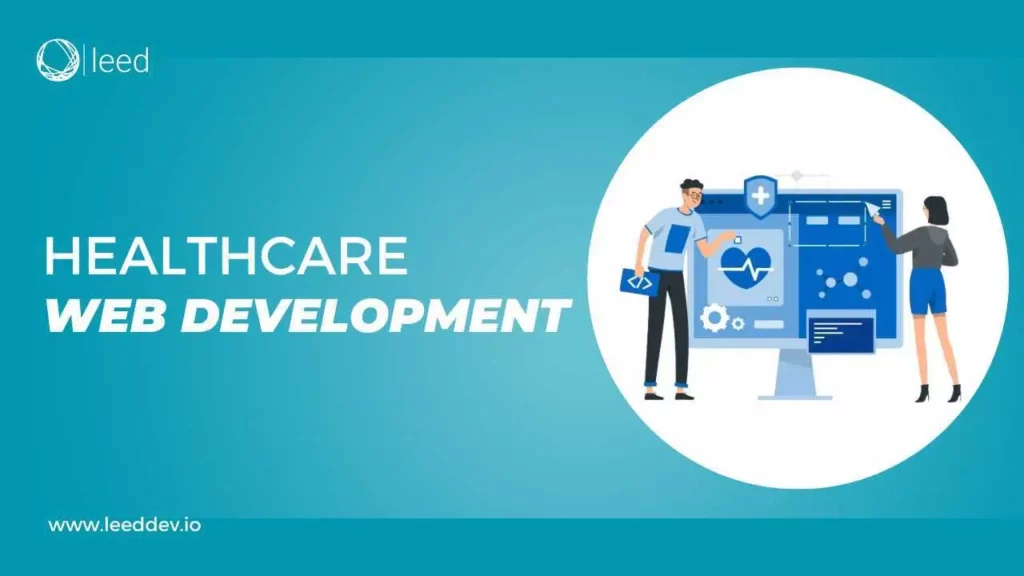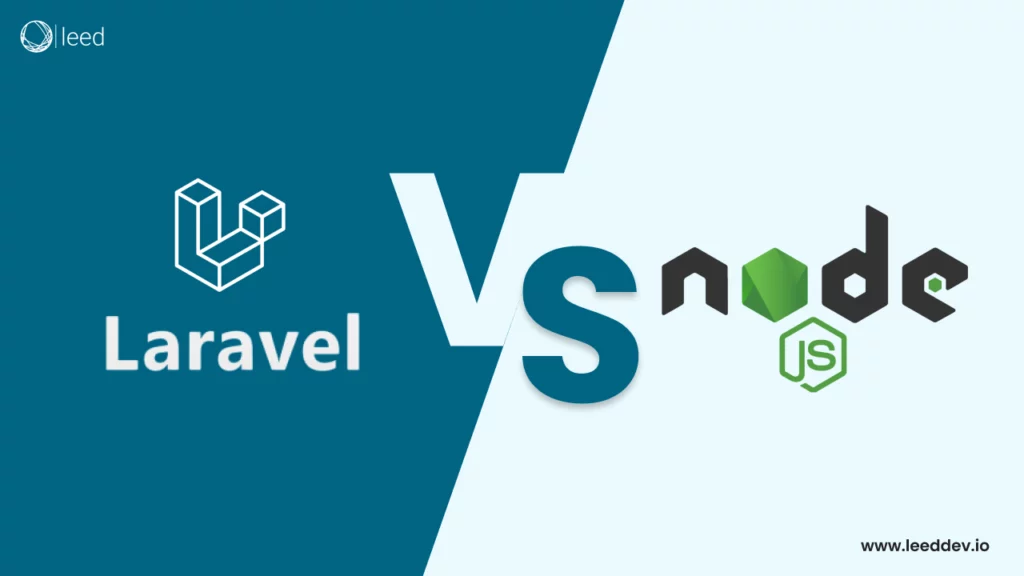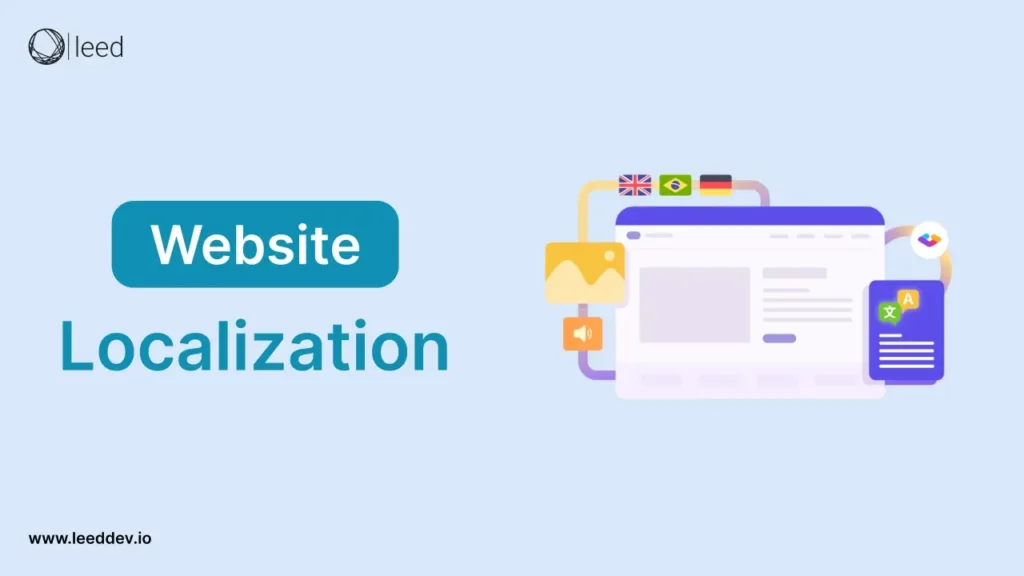Did you know that 80% of people search for healthcare information online and 20% of EU citizens book doctor appointments over internet? Having a well developed healthcare website isn’t just a luxury it’s essential. From providing instant access to medical information to streamlining patient interactions, a healthcare web app can transform the way medical services are delivered. Let’s dive into the key aspects of healthcare web development and why it matters now more than ever!
Why Build a Healthcare Web App?
A healthcare web app boosts credibility by building trust and online visibility. 63% of patients choose providers with a strong digital presence. It ensures 24/7 accessibility, allowing patients to book appointments, access information and receive support anytime. In a rapidly growing industry staying competitive requires a strong digital presence, while features like Electronic Health Records (EHR) and telemedicine streamline patient management. In today’s digital world, a healthcare web app is no longer optional it’s essential!
How to Develop a Healthcare Web App?
For web development for healthcare you need to follow the given steps:
Define Your Needs
Before starting development it is crucial to determine the kind of healthcare website you need. There are two primary options a corporate website or a web application. A corporate website primarily serves as an online presence for a healthcare business, helping in branding, lead generation and marketing. In contrast a web application functions as a digital tool accessible via a browser often offering features like patient management, appointment scheduling and telemedicine. The choice between these depends on your goals, budget and required functionalities.
Research and Planning
Discovery phase is essential to ensure the success of your healthcare website. This involves identifying target audience, defining market needs and setting clear goals for project. Market research helps understand customer pain points while competitor analysis provides insights into industry trends. A well defined strategy also includes SEO planning which ensures better visibility on search engines. Proper planning at this stage reduces development costs and speeds up project execution.
Design and User Experience
UI & UX design play a significant role in effectiveness of healthcare website. A well designed website should be intuitive and visually appealing. Patients & healthcare professionals should be able effortlessly find relevant information. Features such as easy-to-read fonts, responsive design and call-to-action buttons improve user engagement. Strong brand identity and clean layout also contribute to better conversion rates.
Choose the Right Tech Stack
The technology stack determines the website’s security and efficiency.
Recommended Tech Stack
- Frontend: React.js, Vue.js, Nuxt.js (for a smooth user experience).
- Backend: Node.js, Laravel, Express.js (for high-performance applications).
- Database: MongoDB, MySQL, Redis (for secure data storage).
- Hosting & Infrastructure: AWS, VULTR, NGINX (for reliable performance).
Selecting the right stack ensures a seamless, fast, and secure experience.
HIPAA Compliance
Since healthcare websites deal with sensitive patient data, HIPAA compliance is a legal requirement. HIPAA establishes guidelines for data privacy, security and protection. To meet these standards developers must implement SSL certificates, secure backups and access control mechanisms. Additionally all third party vendors involved must sign a Business Associate Agreement to ensure compliance.
Define Website Features
A healthcare website must offer features that enhance both user experience and operational efficiency.
Essential Features
- User Profile Management: Allows patients and doctors to create and manage accounts
- Appointment Scheduling: Enables easy booking of consultations
- Telemedicine & Online Consultations: Supports virtual healthcare services
- Payment Integration: Provides secure payment processing for medical services
- Healthcare Chatbots: Assists users with FAQs and appointment booking
- Analytics & Reporting: Tracks website performance and user behavior
Prioritizing these features improves patient engagement and service efficiency
Development and Testing
Once the design and features are finalized the development phase begins. This involves coding the frontend and backend, integrating third party services and ensuring database connectivity. After development rigorous testing is conducted to fix bugs, optimize performance and enhance security. Testing includes functional testing, usability testing, security testing & performance testing. This ensures that healthcare website is fully functional and meets compliance requirements before launch.
Launch and Continuous Improvement
After successful testing website is deployed to live server and made accessible to users. However launching is not the final step. Continuous improvement is necessary to keep up with evolving healthcare trends & technological advancements. Regular updates ensure that website remains secure. Monitoring user feedback also helps in making data driven improvements.
Benefits of Healthcare Web Development
Some of the main benefits of medical web development are as follows:
Cost Reduction
Investing in healthcare web development may seem like an expense at first but in long run it significantly reduces costs. Features like electronic health records help in data storage and management. Online appointment scheduling and billing systems replace manual processes. This cut down paperwork and operational expenses. Telehealth services further minimize the need for in-person visits.
Competitive Advantage
Well designed healthcare website helps medical providers stand out in a crowded industry. Custom built website with clear information and strong security measures enhances trust and sets your practice apart from competitors. Optimizing the site for search engines further increases visibility and patient engagement.
Improved Patient Engagement
Healthcare website allows medical providers to connect with patients more effectively. Integration with social media helps healthcare organizations reach a broader audience. Additionally features like online chat and patient portals enhance communication ensuring that patients stay informed about their treatment plan.
Convenient Appointment Scheduling
Most valuable features of a medical website is online appointment scheduling. Patients can easily book, reschedule or cancel appointments without making phone calls. This not only enhances convenience for patients but also reduces the burden on administrative staff.
Secure Patient Portals
Healthcare website provides patients with secure access to their medical records, prescriptions and treatment plans. These portals allow direct communication with healthcare providers. Having easy access to medical history improves patient satisfaction.
Educational Resources
Medical websites serve as a reliable source of health related information. Instead of searching the internet for answers patients can access professionally curated content about medical conditions. This helps improve patient awareness and promotes proactive health management.
Telehealth Services
Virtual consultations are becoming increasingly popular. Healthcare website can facilitate telehealth services. Through video calls & online messaging doctors can treat patients remotely reducing the need for in person visits.
Enhanced Communication Channels
Healthcare website enhances communication between doctors and patients. Features like live chat, chatbots and online forms allow patients to ask medical questions and receive timely responses. Automated systems also help in appointment reminders and prescription refills.
Cost of Healthcare Web App Development
The cost of building a healthcare web app depends on complexity, team location, and required features.
On Average
- Full web app: ~$100000
- Website development: $5000 – $100000
Cost by Website Type
- Corporate Website: $5000
- Appointment Scheduling: $20000
- Electronic Health Records: $40000
- Medical Diagnosis: $40,000
- Medical Networking: $70,000
- Hospital Management: $80,000
- Telemedicine: $100,000
Development Cost by Location
- USA: ~$150/hour
- Western Europe: ~$100/hour
- Eastern Europe: ~$40–50/hour
Secure Digital Solutions for Healthcare by Leed Software
Looking for best Healthcare web development services? Leed Software Development specialize in creating secure, user-friendly and high-performance healthcare web apps designed to your needs. Whether you’re looking to develop a corporate healthcare website, an advanced telemedicine platform or medical website design and development, our team ensures compliance with HIPAA regulations, smooth user experience and best security.
With expertise in frontend and backend development, cloud hosting, and data security, we bring your vision to life enhancing patient engagement, optimizing operations, and driving growth. As the best Healthcare web development agency Leed Software is ready to transform your healthcare services Let’s build something extraordinary together!
FAQs
Why do I need a healthcare web app?
A healthcare web app improves patient engagement, streamlines operations, and ensures 24/7 accessibility.
How much does healthcare web development cost?
Costs range from $5,000 for basic websites to $100,000+ for complex solutions like telemedicine apps.
What features should a healthcare web app have?
Essential features include appointment scheduling, patient portals, telemedicine, EHR integration, and secure payments.
Is HIPAA compliance necessary for my healthcare website?
Yes, if your platform handles patient data, it must comply with HIPAA for security and legal compliance.
What technologies are best for healthcare web development?
Popular choices include React.js, Node.js, MongoDB, and AWS for secure, scalable, and high-performance apps.
How can Leed Software Development help?
We build secure, user-friendly, and HIPAA-compliant healthcare web apps tailored to your needs.




